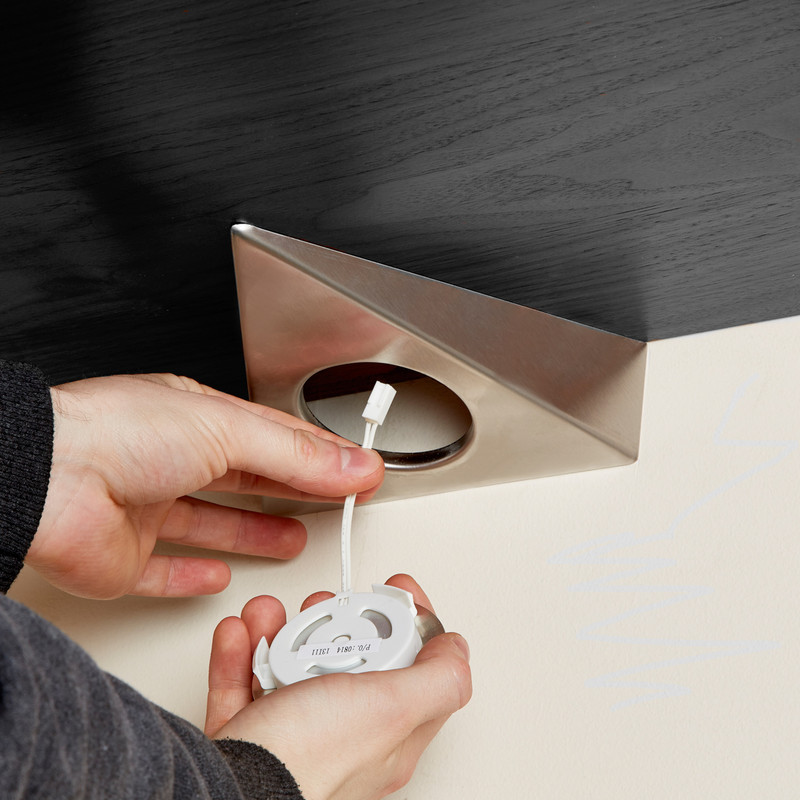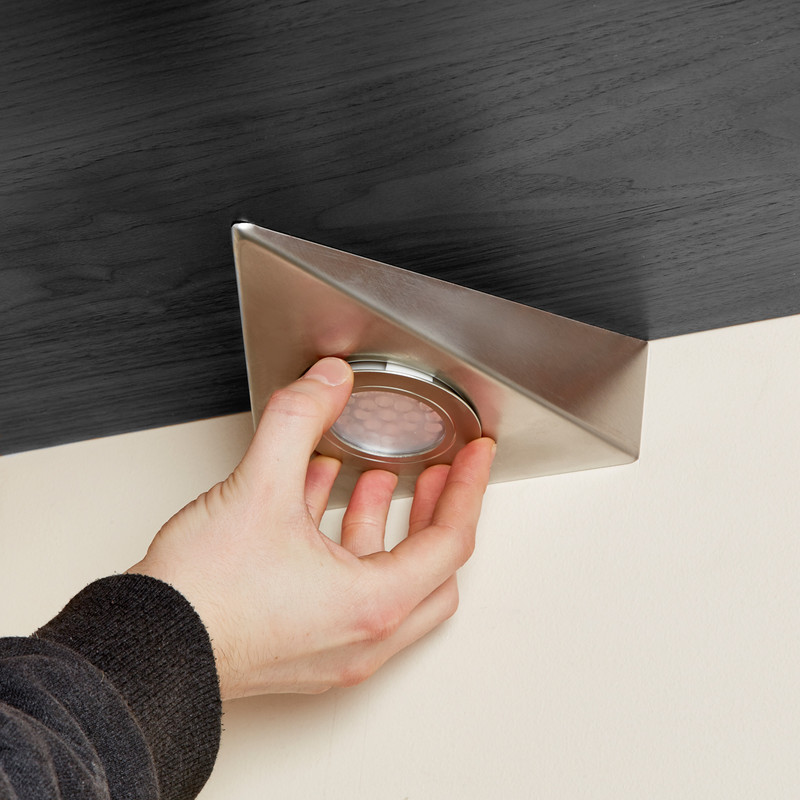Understanding Low Voltage Under Cabinet Lighting

Low voltage under cabinet lighting is a popular choice for kitchens and other areas where additional illumination is desired. It offers several advantages over traditional high voltage lighting, making it a versatile and efficient option for enhancing your space.
Advantages of Low Voltage Under Cabinet Lighting
Low voltage under cabinet lighting offers several benefits that make it an attractive choice for homeowners:
- Energy Efficiency: Low voltage systems consume less power than high voltage systems, leading to lower energy bills.
- Safety: Operating at a lower voltage, these systems pose less risk of electrical shock, making them safer for use in kitchens and other areas with moisture or potential for contact.
- Flexibility: Low voltage systems allow for greater flexibility in installation and design, enabling you to easily adjust the placement and direction of the lights.
- Dimmability: Many low voltage systems offer dimmability, allowing you to adjust the brightness of the lights to suit your needs.
Common Types of Low Voltage Bulbs
There are several types of low voltage bulbs commonly used in under cabinet lighting systems. These bulbs vary in their features, lifespan, and energy efficiency, making it essential to understand their differences to choose the best option for your needs.
Comparison of Low Voltage Bulb Types
Here is a comparison of common low voltage bulb types, highlighting their features, lifespan, and energy efficiency:
| Bulb Type | Wattage | Lumen Output | Color Temperature | Estimated Lifespan |
|---|---|---|---|---|
| Halogen | 20-50 watts | 1000-2500 lumens | 2700-3000K (warm white) | 2,000-4,000 hours |
| LED | 5-15 watts | 500-1500 lumens | 2700-6500K (warm white to daylight) | 25,000-50,000 hours |
| CFL (Compact Fluorescent) | 10-25 watts | 600-1500 lumens | 2700-3000K (warm white) | 8,000-10,000 hours |
Replacing Under Cabinet Lighting Bulbs: Low Voltage Under Cabinet Lighting Replacement Bulbs

Replacing under cabinet lighting bulbs is a simple task that can brighten up your kitchen or workspace. However, it’s important to follow safety precautions and choose the right replacement bulb to ensure optimal performance and longevity.
Identifying Signs of a Bulb That Needs Replacing
When a low voltage under cabinet lighting bulb starts to fail, it may exhibit several signs. These signs indicate that the bulb is nearing the end of its lifespan and needs to be replaced.
- Dimmed or flickering light: This is a common sign that the bulb is nearing the end of its lifespan. The filament inside the bulb may be wearing out, causing it to emit less light.
- Bulb is completely out: If the bulb is no longer emitting any light, it’s definitely time to replace it.
- Bulb is broken or damaged: If the bulb is cracked or broken, it should be replaced immediately to prevent further damage or safety hazards.
Steps to Replace Under Cabinet Lighting Bulbs
Replacing under cabinet lighting bulbs involves several steps, including safety precautions. These steps ensure a safe and efficient replacement process.
- Turn off the power: Before attempting to replace any bulb, always turn off the power to the fixture at the circuit breaker. This prevents electrical shock and ensures safety during the replacement process.
- Remove the old bulb: Once the power is off, carefully remove the old bulb from the fixture. If the bulb is difficult to remove, use a soft cloth or a non-conductive tool to grip it.
- Insert the new bulb: Carefully insert the new bulb into the fixture, making sure it is securely seated.
- Turn on the power: Once the new bulb is in place, turn the power back on at the circuit breaker and test the bulb to ensure it is working properly.
Choosing the Right Replacement Bulb
Selecting the right replacement bulb is crucial for optimal performance and longevity. Several factors influence the choice of replacement bulb.
- Bulb type: The type of bulb used in your under cabinet lighting fixture determines the replacement bulb. Common types include LED, halogen, and fluorescent bulbs.
- Voltage: Ensure the replacement bulb has the same voltage rating as the existing bulb. Most under cabinet lighting fixtures operate on low voltage, typically 12 volts.
- Wattage: The wattage of the bulb determines the brightness. Choose a replacement bulb with the same wattage or a slightly higher wattage if you want brighter light.
- Color temperature: The color temperature of a bulb is measured in Kelvin (K). Warm white bulbs (2700-3000K) provide a warm and cozy ambiance, while cool white bulbs (4000-4500K) offer a brighter and more clinical feel.
Disposing of Old Bulbs Responsibly
Proper disposal of old bulbs is essential for environmental protection.
- Check local regulations: Different regions have different regulations for disposing of old bulbs. Contact your local waste management authority for specific guidelines.
- Recycling options: Many retailers and waste management facilities offer recycling programs for old bulbs. Check with your local recycling center or retailer for availability.
- Hazardous waste disposal: Some bulbs, especially those containing mercury, should be disposed of as hazardous waste. Contact your local waste management authority for instructions.
Troubleshooting Common Issues

Low voltage under cabinet lighting systems are generally reliable, but like any electrical system, they can experience issues. These issues can range from minor inconveniences like flickering to more serious problems like complete failure. Understanding the common causes and troubleshooting steps can help you resolve these problems efficiently.
Identifying Common Problems
Understanding the possible causes of common problems is crucial for effective troubleshooting. These problems include flickering, dimness, and complete failure.
- Flickering: This can be caused by a loose connection, a faulty bulb, a dying transformer, or voltage fluctuations.
- Dimness: Dimness can be caused by a faulty bulb, a dying transformer, or a loose connection.
- Complete Failure: Complete failure can be caused by a blown bulb, a faulty transformer, a broken wire, or a tripped circuit breaker.
Troubleshooting Steps
Here are some troubleshooting steps to help you diagnose and resolve common issues:
Checking the Bulbs
- Inspect the bulbs: Begin by visually inspecting the bulbs. Look for any signs of damage, such as cracks or burns.
- Test the bulbs: If the bulbs appear damaged, replace them with new ones of the same type and wattage. If the problem persists, the issue likely lies elsewhere.
- Check for proper contact: Ensure that the bulbs are securely seated in their sockets. Loose connections can cause flickering or dimness.
Checking the Wiring
- Inspect the wiring: Examine the wiring for any signs of damage, such as frayed wires, exposed wires, or loose connections.
- Check for loose connections: Make sure all connections at the transformer, the light fixtures, and the power source are secure. Tighten any loose screws or connectors.
- Test the wiring: Use a multimeter to check the continuity of the wiring. If there is a break in the wiring, you will need to repair or replace the damaged section.
Testing the Transformer
- Inspect the transformer: Look for any signs of damage, such as cracks or burns.
- Check the transformer output: Use a multimeter to measure the voltage output of the transformer. If the output voltage is significantly lower than the rated voltage, the transformer may be failing.
- Listen for humming: A transformer that is working properly will emit a low humming sound. If the transformer is silent, it may be faulty.
Replacing the Transformer, Low voltage under cabinet lighting replacement bulbs
If the transformer is faulty, you will need to replace it. Here are some steps to follow:
- Disconnect the power: Before replacing the transformer, disconnect the power to the system at the circuit breaker.
- Remove the old transformer: Carefully remove the old transformer from its mounting location.
- Install the new transformer: Install the new transformer in the same location as the old one. Make sure the connections are secure.
- Reconnect the power: Once the new transformer is installed, reconnect the power to the system.
You know those low voltage under cabinet lighting replacement bulbs? They’re like the forgotten heroes of the kitchen, silently illuminating your midnight snack raids. But let’s be honest, sometimes they need a little personality boost. Why not add some DIY flair with diy teenage bedroom wall art around your cabinets?
Think glow-in-the-dark paint, glitter, or even those old cassette tapes you’ve been hoarding. Then, when your under cabinet lights finally give out, you’ll have a masterpiece to admire while you’re reaching for that extra slice of pizza.
So you’re finally tackling those dim under-cabinet lights, huh? Good for you! But before you get lost in the world of LEDs and lumens, take a moment to consider the bigger picture: your TV wall mount height. Is it too high?
Too low? You don’t want to be craning your neck like a giraffe while you’re trying to see what’s happening in that cooking show. Check out this guide tv wall mount height bedroom for some ergonomic enlightenment. Then, armed with a newfound appreciation for proper viewing angles, you can conquer those under-cabinet lights with confidence!